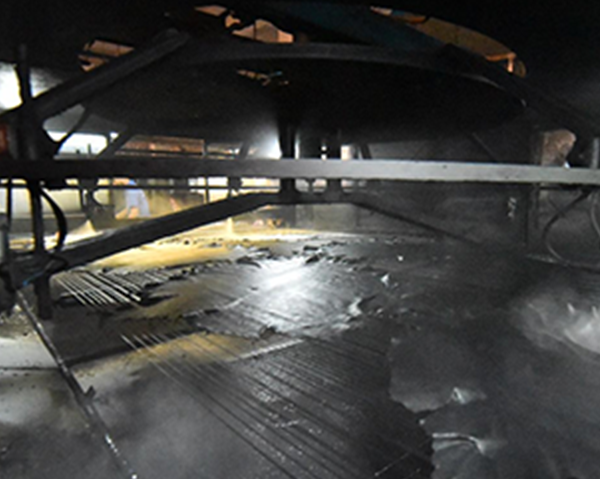Conditioning or controlled rehydration is one of the key post-drying stages in Iran’s leather industry. Its purpose is to restore the leather’s moisture content to an optimal level and prepare it for mechanical operations and final finishing. This stage ensures that leather regains its flexibility and can be processed further without cracking or damage, making it ready for cutting, shaping, and finishing work.
After the drying stage, the moisture content of leather typically falls to around 6–8%. While this is suitable for storage, it leaves the leather stiff and less flexible, making it prone to cracking or structural damage during subsequent operations. In the conditioning process, moisture is carefully and evenly increased to about 11–12%, allowing the leather to become soft and pliable again.
In Iranian tanneries and workshops, conditioning is usually performed by fine water misting, gentle steaming, or placing leathers in humidity-controlled chambers with regulated temperature and relative humidity. This process is carried out gradually and evenly to avoid problems such as excessive swelling, wrinkling, or unwanted oversaturation. Conditioning not only restores the leather’s elasticity but also improves its performance in later stages such as staking, milling, or finishing.
Beyond improving mechanical properties, conditioning also enhances the surface quality of the leather. Conditioned leather shapes more easily, cuts cleanly without cracking, and is better prepared to absorb dyes and protective coatings. This stage guarantees the durability, beauty, and uniformity of the final product and plays a vital role in producing high-quality, export-grade leather goods.
Key characteristics of the conditioning process in Iran’s leather industry:
- Restoring leather moisture to the optimal range of 11–12%
- Even moisture absorption without swelling or fiber damage
- Increased flexibility and softness for subsequent mechanical operations
- Preparing leather for surface finishing and protective coating applications
- Enhancing quality, durability, and workability of leather in production stages


No comments yet.